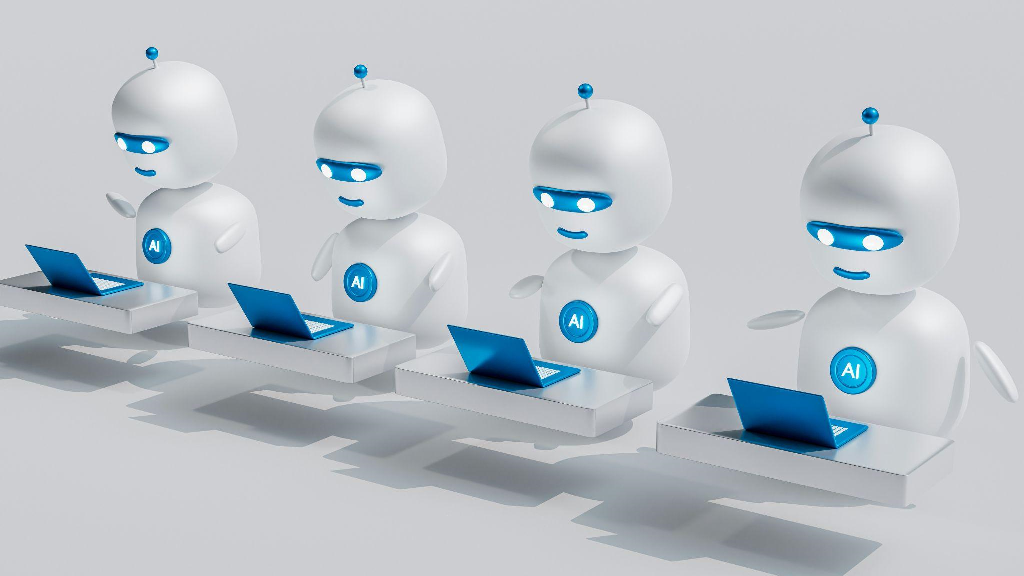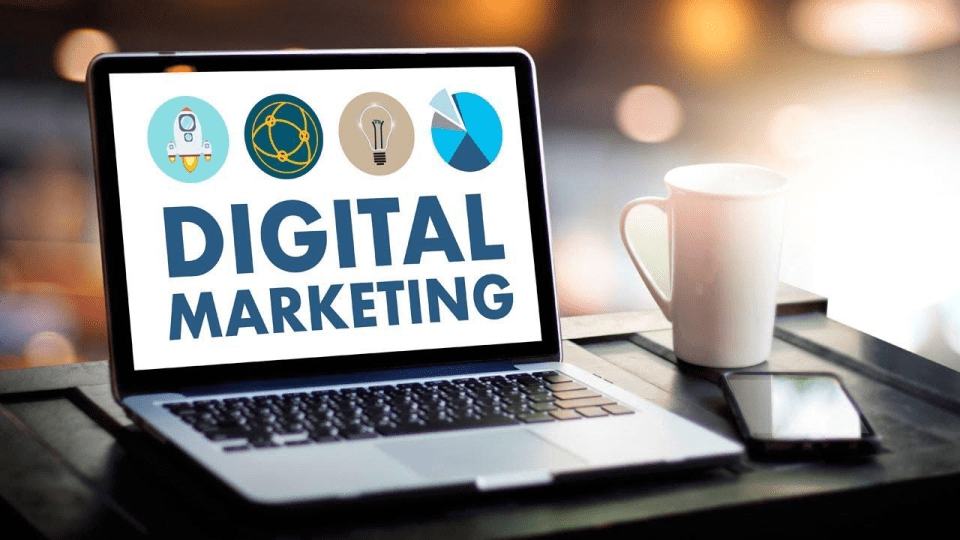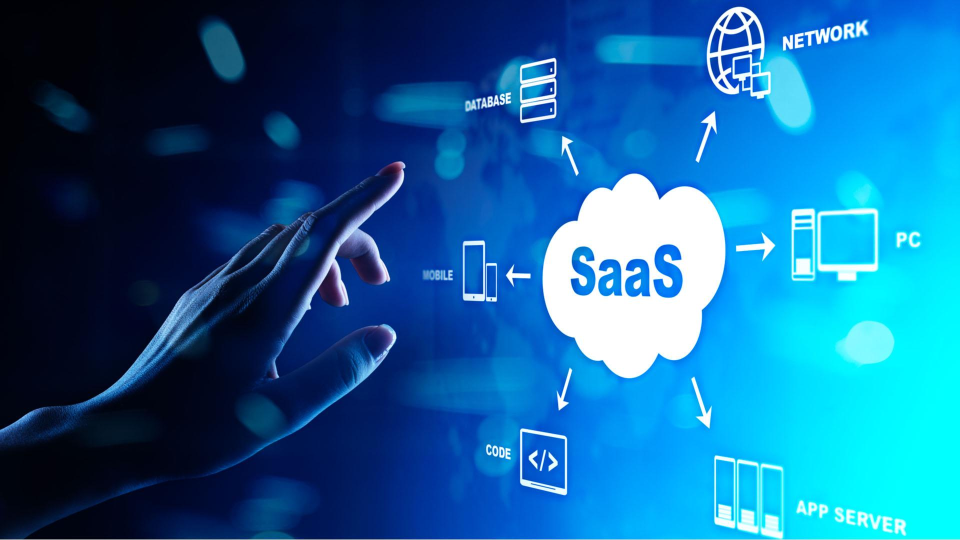How Automation Transforms Digital Marketing for Business Growth

The way businesses grow has fundamentally changed. Gone are the days when marketing teams manually tracked every campaign, finance departments processed each transaction by hand, and customer data lived in scattered spreadsheets. Today's thriving businesses operate like well-oiled machines—where intelligent systems talk to each other, decisions happen in real-time, and growth feels less like a struggle and more like a natural evolution.
This transformation didn't happen overnight. Digital marketing evolved from simple banner ads into sophisticated, data-driven ecosystems. Business operations shifted from manual workflows to automated processes that handle everything from customer engagement to financial transactions. And now, these two worlds are colliding in the most exciting way possible. When digital marketing joins forces with business automation, something remarkable happens: companies don't just work faster—they work smarter.
The Digital Marketing Revolution: More Than Just Online Ads
Digital marketing today bears little resemblance to its earlier incarnations. It's no longer about plastering ads across the internet and hoping someone clicks. Modern digital marketing is a sophisticated discipline encompassing search engine optimization, paid media campaigns, content strategy, social engagement, email nurturing, and AI-driven personalization—all working in concert to guide prospects through increasingly complex customer journeys.
But with this sophistication came challenges. Marketers found themselves drowning in data from countless platforms—Google Analytics, social media dashboards, email metrics, CRM reports, and advertising consoles.
Managing campaigns across these fragmented systems became a full-time job in itself. Teams spent more time wrestling with spreadsheets and switching between tools than actually strategizing or creating compelling content.
This is where automation entered as the great equalizer. Instead of marketers manually scheduling social posts, tracking engagement, and following up with leads, intelligent systems began handling these repetitive tasks. Automation became the bridge that connected disparate marketing activities into cohesive, efficient campaigns.
The Rise of Data-Driven Decisions
Marketing decisions once relied heavily on intuition and past experience. Today, analytics tools generate mountains of actionable data about customer behavior, campaign performance, and market trends.
Automation refines this process further by not just collecting data, but actively using it to optimize campaigns in real-time. Ad spend gets automatically adjusted based on performance. Email send times adapt to when individual recipients are most likely to engage. Content recommendations shift based on browsing patterns.
Customer-Centric Marketing
The modern consumer expects personalization. They want brands to understand their needs, remember their preferences, and communicate in relevant ways. Achieving this at scale requires automation powered by predictive algorithms. Systems can now track thousands of customer journeys simultaneously, triggering personalized messages, product recommendations, and offers based on each individual's behavior and lifecycle stage.
Streamline Business Automation: A Hidden Powerhouse for Marketers
While marketers focus on campaigns and customer engagement, backend automation quietly powers their success. This is where the concept of streamline business automation truly shines—by eliminating friction between departments and ensuring smooth operations behind the scenes.
When marketing generates a qualified lead, automation can instantly assign it to the appropriate sales representative based on territory, expertise, or current workload. When that lead becomes a customer, automated systems process contracts, set up billing, and trigger welcome sequences. Marketing reports that once took days to compile now generate automatically, pulling data from every relevant source and presenting it in digestible dashboards.
This behind-the-scenes efficiency directly impacts marketing ROI. When processes run smoothly, marketers can focus budget and effort on activities that directly drive growth rather than administrative tasks. Internal collaboration improves as teams share real-time data through integrated systems rather than relying on occasional meetings and email updates.
Behind the Scenes Benefits
Imagine a workflow where a marketing automation platform triggers a CRM update when someone engages with a campaign. That CRM update alerts the sales team and simultaneously sends information to financial systems. When the deal closes, Digital Marketing by First Page strategies can be immediately refined based on which campaigns drove the most valuable customers, while EDI payment systems automatically process the transaction. No manual handoffs, no delays, no information gaps.
Understanding Business Automation: The Engine Behind Seamless Operations
Business automation might sound technical, but the concept is refreshingly straightforward: using technology to handle routine tasks that humans once performed manually. It's about creating systems that work together intelligently, reducing the need for constant human intervention while accelerating decision-making and execution.
When we talk about streamline business automation, we're referring to integrated systems that synchronize data across departments, eliminate redundant processes, and ensure information flows smoothly from one function to another.
Instead of marketing teams manually entering leads into a CRM, automation handles it instantly. Rather than finance departments processing each invoice individually, systems manage transactions automatically.
The technology stack supporting modern automation includes customer relationship management (CRM) platforms, workflow automation tools, EDI payment systems for financial transactions, and marketing automation software like HubSpot or ActiveCampaign. Each tool serves a specific function, but the real magic happens when they connect seamlessly.
Types of Automation in Business
Automation isn't limited to one department. Marketing teams automate campaign execution and lead nurturing. Finance departments streamline invoicing and payment processing. Sales teams use automation for follow-ups and pipeline management. Even HR leverages automation for onboarding and employee management. When these systems integrate, the entire organization operates more cohesively.
Benefits Beyond Efficiency
The advantages extend far beyond simply saving time. Automation dramatically reduces human error—no more missed follow-ups or incorrectly entered data. Response times shrink from days to seconds. Costs decrease as fewer resources get consumed on manual tasks. Perhaps most importantly, customers experience consistency in every interaction, whether they're receiving an email, making a purchase, or resolving a support issue.
Where Digital Marketing and Automation Intersect
The intersection of digital marketing and automation creates a powerful synergy. Marketing campaigns become more effective when automation handles the execution, allowing marketers to focus their creative energy on strategy, messaging, and innovation. Instead of spending hours manually segmenting email lists or adjusting ad bids, marketers can dedicate that time to understanding customer psychology, crafting compelling stories, and identifying new opportunities.
When a prospect converts to a customer, automated systems can immediately set up their account, process initial payments smoothly, and trigger personalized onboarding sequences—all without manual intervention. This seamless experience builds trust and shortens the time from sale to active customer.
Automation allows marketing teams to operate at a scale that would be impossible manually. A single marketer can now manage sophisticated multi-channel campaigns reaching thousands of prospects, because systems handle the heavy lifting of execution, tracking, and optimization.
Automated Campaigns
Email workflows that once required manual scheduling now run on autopilot, sending the right message to the right person at the perfect moment based on their behavior. Remarketing campaigns automatically target people who visited your website but didn't convert. Content gets scheduled and published across multiple platforms simultaneously. Performance tracking happens in real-time, with alerts triggered when campaigns need attention.
Unified Customer Journeys
The most powerful marketing automation connects CRM data with analytics platforms and marketing tools to create truly unified customer journeys. When a prospect downloads a whitepaper, the system doesn't just add them to an email list—it updates their CRM record, triggers a relevant nurturing sequence, notifies the sales team if they match ideal customer criteria, and tracks every subsequent interaction across channels.
The Role of EDI Payment Systems in Marketing Ecosystems
EDI—Electronic Data Interchange—might seem like a purely financial concern, but its impact on marketing growth is substantial. EDI systems automate the exchange of business documents and payment information between companies, eliminating manual processing and accelerating transactions.
Consider how Streamline EDI payment with Orderful systems improve the customer experience in B2B marketing. For B2B marketers, this matters enormously. When payment and invoicing processes are automated and seamless, sales cycles shorten.
Customers experience fewer friction points during onboarding. Trust builds faster when financial interactions feel professional and effortless. Marketing can confidently promise quick setup times because automated systems actually deliver on that promise.
Integration between EDI payment systems and marketing platforms creates a continuous feedback loop. Financial data flows back to marketing dashboards, revealing which campaigns attract the most valuable customers, which products generate the highest margins, and where marketing spend delivers the strongest ROI.
EDI + Marketing Integration
When financial automation connects with marketing systems, every transaction becomes a data point that refines future strategy. Customer lifetime value calculations become more accurate. Renewal predictions improve. Marketing can segment customers not just by engagement metrics but by actual purchasing behavior and payment patterns.
Faster, Smarter Decisions
Real-time financial data enables marketers to make confident decisions about budget allocation and campaign optimization. Instead of waiting weeks for financial reports, marketing teams see immediate results from their efforts, allowing rapid iteration and improvement.
AI and Predictive Insights: The Future of Automated Digital Marketing
Artificial intelligence takes automation to another level entirely. While traditional automation follows predefined rules—"if this happens, then do that"—AI systems learn from data and make increasingly sophisticated decisions without explicit programming.
AI-powered marketing automation transforms raw data into actionable insights. These systems identify patterns humans might miss, predict customer behavior with surprising accuracy, and optimize campaigns in ways that would require armies of analysts to achieve manually. Predictive analytics forecast which prospects are most likely to convert, which customers might churn, and which products will trend in coming months.
The reduction in manual analysis frees marketers to focus on strategy and creativity—the uniquely human skills that drive breakthrough marketing results.
Extracting Value from Video Content
Video marketing has exploded across platforms, but unlocking its full potential requires transforming visual content into analyzable data. Modern marketers leverage AI-powered tools to extract YouTube video transcript data, converting spoken content into searchable, indexable text.
This automation enables content repurposing at scale—turning webinars into blog posts, extracting key quotes for social media, and identifying trending topics across video libraries.
By automating video transcription and analysis, marketing teams can optimize their content strategy based on what resonates most with audiences, improve SEO through text-based content, and make video archives fully searchable. The reduction in manual analysis frees marketers to focus on strategy and creativity—the uniquely human skills that drive breakthrough marketing results.
Smart Campaign Optimization
AI handles automated A/B testing across multiple variables simultaneously, identifying winning combinations far faster than traditional testing methods. Content recommendation engines suggest the most relevant articles, products, or resources for each visitor. Sentiment analysis tools scan social media and reviews, alerting teams to emerging trends or potential PR issues before they escalate.
Predictive Customer Engagement
Modern systems forecast purchase intent by analyzing browsing behavior, past interactions, and demographic data. They predict optimal times to reach out, which channels each customer prefers, and what messages will resonate most strongly. Lifecycle management becomes proactive rather than reactive, with automated systems identifying customers at risk of churning and triggering retention campaigns before it's too late.
Challenges and Ethical Considerations in Automated Marketing
Despite its tremendous benefits, automation isn't without challenges. Over-reliance on automated systems can strip away the personal touch that makes marketing memorable. When every interaction feels scripted and algorithmic, brands risk losing the human connection that drives loyalty.
Data security and privacy concerns loom large in an era of increasing automation. Systems handling customer information must be secure, compliant with regulations, and transparent about data usage. The more automated a business becomes, the more critical these considerations grow.
Perhaps most importantly, automation should enhance human creativity, not replace it. The most effective marketing still requires empathy, storytelling ability, and cultural awareness—qualities that remain distinctly human.
Automation Ethics
Transparency and fairness must guide automated decision-making. Customers deserve to know when they're interacting with automated systems. Algorithms must be designed to avoid bias and discrimination. Data collection should respect privacy boundaries and give customers meaningful control over their information.
The Human Element
The best marketing results still come from genuine emotional connections. Automation handles execution brilliantly, but strategy, creativity, and authentic brand storytelling require human insight. Smart businesses use automation to free their teams to focus on these higher-level activities rather than trying to automate creativity itself.
The Path to Seamless, Intelligent Growth
The convergence of digital marketing and business automation represents more than just technological progress—it signals a fundamental shift in how successful businesses operate. When marketing systems, financial automation, and customer data work together seamlessly, organizations gain capabilities that would have seemed almost magical a generation ago.
This integration doesn't diminish the importance of human marketers. Instead, it elevates their role by freeing them from tedious execution tasks to focus on strategy, creativity, and genuine customer relationships. Automation handles the mechanics while humans provide the insight, empathy, and innovation that drive breakthrough results.
Conclusion
The fusion of digital marketing and business automation marks a new era of efficiency, intelligence, and customer-centric growth. When systems connect seamlessly, businesses reduce manual effort, eliminate delays, and gain real-time insights for better decisions.
Automation strengthens every stage of the customer journey while empowering marketers to focus on creativity and strategy. Companies that embrace this synergy build scalable, resilient operations and unlock the potential for continuous, sustainable success.









